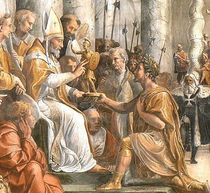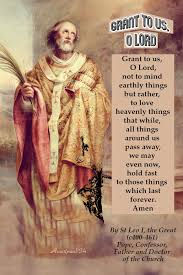The Catholic Defender: Why are there so many reported apparitions of the Blessed Virgin Mary.
- Donald Hartley

- Dec 18, 2022
- 4 min read

Private Revelation
Out of the 386 apparitions, the Church has decided that "yes" there is a supernatural character only in eight cases: Fatima (Portugal), Beauraing (Belgium), Banneux (Belgium), Akita (Japan), Syracuse (Italy), Zeitoun (Egypt), Manila (Philippines) (according to some sources), and Betania (Venezuela).
If, after an investigation, the bishop determines that the apparition constitutes an authentic supernatural appearance of the Blessed Virgin Mary, then the apparition is considered approved for the entire Catholic Church, unless his successor or the Holy See were to contradict his decision.
The local bishop is the first and main authority in apparition cases, which can be defined as instances of private revelation. Bishops evaluate evidence of an apparition according to these guidelines: 1. The facts in the case are free of error.
If the Church makes a negative ruling about a particular apparition, we are not to believe in that apparition. If the bishop makes a positive ruling about an apparition, we are not bound to assent to the apparition, but we cannot berate the messages nor the apparition once the Church declares it valid. The reader will find that in the majority of cases, the Church has neither taken action, nor made a final decision.
A statistical analysis of the Marian apparition directory reveals the following results. During the twentieth century, there have been 386 cases of Marian apparitions. The Church has made "no decision" about the supernatural character regarding 299 of the 386 cases. The Church has made a "negative decision" about the supernatural character in seventy-nine of the 386 cases. Out of the 386 apparitions, the Church has decided that "yes" there is a supernatural character only in eight cases: Fatima (Portugal), Beauraing (Belgium), Banneux (Belgium), Akita (Japan), Syracuse (Italy), Zeitoun (Egypt), Manila (Philippines) (according to some sources), and Betania (Venezuela). Local bishops have approved of the faith expression at the sites where these eight apparitions occurred. Besides the eight approved apparitions, there have been eleven (out of the 386 apparitions) which have not been approved with a "supernatural character," but which have received a "yes" to indicate the local bishop's "approval of faith expression (prayer and devotion) at the site."
Prior to any classification, the local bishop appoints a committee to take testimony, investigate, study, and report its findings to the local bishop. On our Web page directory of Marian apparitions, we have two columns which pertain to the church's rulings for each apparition that we include in our list. One column pertains to the "supernatural character" of the apparitions. The approval of an apparition's supernatural character means that the case cannot be explained away due to an impediment in the visionary, nor as fraud, nor as a natural phenomenon, nor of demonic origin.
Marian apparitions are considered expressions of Mary's ongoing motherly care for the church. The understood purpose of each apparition is to draw attention to some aspect of the Christian message, given the needs of a particular time and place.
Pope St. John XXIII about Lourdes in 1959: “Listen attentively to the salutary warnings of the Mother of God, who seeks to guide us in our conduct."
Pope St. John Paul II taught us to see that Marian doctrine and devotion are indeed both Christ-centered and Church-centered. He noted the harmony of her unique participation as Co-Redemptrix in the redemption earned by Jesus Christ with her continuing maternal mediation and advocacy for all humanity. Mary is the perfect model for the People of God in their journey to become, with Jesus and herself, co-redeemers and intercessors for each other and all humankind.
Knowing and teaching the whole truth about Mary is thus the best means to teach the whole truth about Jesus and His saving incarnation, about His redemption and about His Church. The full truth about Mary safeguards the full truth about Jesus.
Mary is the most effective guiding star and mediating force for the new evangelization. The mother prepares the way for the Son. Is it any wonder, then, that He sometimes sends her to appear in our midst, so she can call us once again to draw close to God?
As the Catechism of the Catholic Church affirms, the purpose of private revelation is never to replace public revelation contained in Scripture and Tradition. Rather, the goal of authentic private revelation is to “help people live out their faith more fully”
The Church is necessarily both cautious and open in the matter of private revelation. She must discern what is false. And she must avoid the risk of losing credibility as the guardian of public revelation by too hastily confirming a reported private revelation or apparition.
Yet we can clearly observe the abundant blessings of Mary’s action in private revelation. Her appearance is a heaven-sent reminder, an invitation to the world to live the Gospel fully and to assist the Church in its continuing mission of evangelization.
As the Catechism of the Catholic Church affirms, the purpose of private revelation is never to replace public revelation contained in Scripture and Tradition. Rather, the goal of authentic private revelation is to “help people live out their faith more fully”
It accentuates the challenge of the Gospel to prayer, penance, fasting and conversion, which lead to peace of heart and the peace of all human societies.
In contemporary times we have seen more apparitions approved than in any other era of Church history. What does this say about our individual and communal faithfulness and relationship to God? If true Marian apparitions are on the increase, perhaps our age is in greater need of encouragement to live generously the Christian life.





















Comments